Michael Punt
Place: Anecdote, Theory and Practice, and A Young Princess?
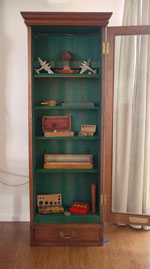
The Impossibly Orrey
Link to images
1 I am grateful to Jan Baetens, Hannah Drayson, Jacqueline Knight and Judith Punt for their thoughtful reading and suggestions in the preparation of this article.
2 I find it difficult to call them sculpture, as will become clearer, because sculpture has come to mean something very different to the kinds of things I have been making for five decades.
3 Flammarion, C., trans. Gore, J.E. (1907) Popular Astronomy: A General Description of the Heavens (London: Chatto and Windus). p.1
4 Maureen Turim offers a general description of the flashback as; ‘simply an image or filmic segment that is understood as representing temporal occurrences anterior to those in the image that preceded it. The flashback concerns a representation of the past that intervenes with the present flow of the film narrative, there is a great deal more to be said about the definition of the flashback and the implications of this term.’ P2
Turim, M. (1989). Flashbacks in Film; Memory and History. London: Routledge.
5 This story is not entirely true. After a while I ventured to South Kensington to the Science Museum and the Geological Museum but concealed the truth since it involved travelling on the underground which my parents would have disapproved of. I also found the Imperial War Museum which for pacifists was off limits to me. So I maintained the fiction of my visits to the Gallery with descriptions of things that I remembered.
6 This painting has haunted me for at least thirty years and featured in several articles I produced as I tried to understand painting as an aesthetic and social argument.
7 Jan Gossart, ca. 1478-1532
8 In the early 1970s I worked closely with the painter Colin Harrison (1938-2017) teaching at the art school in Belfast. His fascination for sixteenth and seventeenth century Dutch painting was infectious and I am grateful for the generosity and patients he showed in sharing his insights with me.
9 In fact on this flight I had on my laptop a GPS navigation programme used for light aircraft navigation and was able to pinpoint the moment we passed overhead.
10 See Said, E. (2004). Thoughts on Late Style, LRB Vol. 26 No. 15. I will discuss this idea of the late work at the end of the article.
11 This is one of Gossaert’s last paintings. It is thought to date from ca. 1530.
12 To access Cambell’s comprehensive account of A Young Princess (Dorothea of Denmark?) see: https://www.nationalgallery.org.uk/media/15481/jean_gossart_a_young_princess.pdf, where there are technical accounts and a pdf of the article can also be downloaded.
13 Some were heliocentric and followed a Copernican system.
14 https://www.nationalgallery.org.uk/media/15481/jean_gossart_a_young_princess.pdf
15 Kooijman, J., et al (Eds.) (2008). Mind the Screen. Amsterdam: AUP. pp.267-275.
16 Ibid. p.269.
17 This is also the foundation for the discussion of the spiritual dimension of cinema by Martha Blassnigg. See Blassnigg, M. (2009). Time Memory, Consciousness, and the Cinema Experience. Amsterdam: Rodopi.
18 Ibid. p.274-5.
19 Said, E. Thoughts on Late Style. LRB Vol. 26 No. 15 · 5 August 2004. P.
20 Latour, B. (1986). "Visualisation and Cognition: Drawing Things Together". IN: H. Kuklick (Ed.) Knowledge and Society Studies in the Sociology of Culture Past and Present. Greenwich: Jai Press vol. 6, pp. 1-40 p.7.
21 This method of keeping a semi-finished work in the line of casual sight came to me in 1983 when I was visiting a colleague in his office in the Tate. Leaning against the wall was a small Cezanne landscape and I thought that the painting looked much better than it did when it was hung in the gallery.
22 Said, E. Thoughts on Late Style. LRB Vol. 26 No. 15 · 5 August 2004. p.7
Abstract
This article proposes that attention to the place of art and practice facilitates both a subject-to-object and object-to-object consideration of the artwork in a way that draws anecdote, history and theory together into a single perspective. It assumes an expansion of a number of established theoretical frameworks (new historicism, apparatus theory, object-oriented ontology and actor network theory), melding anecdote, theory and arts practice in a thick description of a single academic practice that encompasses theory, history and artworks. This expansion is contained by the consideration of apparatus theory, as it is understood and used in film studies, to examine a number of ideas, images and artefacts that represent an external participation in the place that contains them. It concludes with a photographic essay by Jacqueline Knight on a series of objects made by the author that emphasise the artwork as a mobile constellation that has a fragile relationship with a place from which it derives some temporary stability.1
An anecdote about a place
I seem to have spent most of my professional life in several places at the same time. In one location (my studio and the gallery), I practised as an artist (a sculptor and filmmaker), synthesising personal anecdotes in artworks, while in another (journals, books and art schools), I synthesised historical and theoretical research in a conventional academic manner that disavowed perception and experience. I had never tried to bring these together as some artists and writers have done; indeed, I maintained something of a barricade between the two, content to enjoy the freedom of intellectual movement as compensation for any inconvenience. This separation was in many ways no different to the relatively common distinction between professional and domestic life. Recently, however, I began to notice that I had either been derelict in shoring up the borders or (possibly) had somehow decided I no longer needed to maintain the fiction that one place was two places. This preamble might help contextualise the anecdote that follows.
“I had travelled to London for an academic meeting, and as it finished early, I took a walk with an artist friend. We fell into discussing a series of sculptures I had been working on for about four years. These objects, inspired by early models of the solar system, were intended to raise questions about what it means when an inhabitant of a universe approaches that universe from an external perspective, viewing it as fundamentally material and mechanical. I described these objects 2 to my friend as three-dimensional astronomical models inspired by nineteenth-century illustrations – notably, those in Flammarion’s popular guide to contemporary astronomy, published in 1907.
Popular Astronomy: A General Description of the Heavens is a serious scientific work that opens with a direct address to the reader:
This work is written for those who wish to hear an account of the things that surround them… Astronomy is the science that concerns us most, the one most necessary for our general instruction … We cannot be indifferent to it, for it alone teaches us where we are and what we are.3
Along with careful descriptions and explanations, the book contains several charts and illustrations. Most of these depict planets or diagrams of their orbits, but there are also illusionistic engravings of events on one of these planets (Earth), such as fig. 59 (The Great Telescope of the Seventeenth Century) depicting around two dozen men using a huge gantry to raise the telescope’s massive, hundred-foot tubes, and also fig. 65 (The ‘Mascaret’ at Caudebec) which shows a handful of people on the banks of the Seine watching with great excitement as the vast standing wave of a tidal bore falls against the flow of the river. The enigma of these events – and the reader’s own engagement with them – in a book that necessarily renders the universe as a mathematical abstraction chimed with my own longstanding fascination with the place of anecdote and synthesis in historical narratives. Far from knowing where we are and what we are, as Flammarion hopes, the scientific narrative places the reader simultaneously inside and outside the diegesis, rupturing the spatial flow like a super-cinematic flashback.4 Aside from the anomalies of the subject position that this collection of schematics of the universe creates, what struck me most is the amount of solid black used in the printing of the illustrations. The Sun, for example, the brightest of all our stars, is rendered as a solid black disc, its circumference broken by whiskery eruptions. One or two pages are almost entirely composed of black ink speckled with a few white dots, looking for all the world like misplaced particles of dust that have crept into the production process. It seems that, despite the human agency involved in the printing of the images, some dimensions of the relationship between the Sun and its illustration in the book exist in a realm not fully accessible to us. The excessive brightness of one seems to insist on the excessive density in the other.
These thoughts about Flammarion’s book, as I recounted to my friend, had rekindled my interest in some research I had published on the subject of orreries some years earlier, and led me to create a series of carefully joined boxes using eighteenth-century mahogany (recycled from a decrepit Georgian table) in which I placed various low-relief constructions comprising polished discs of nineteenth-century lignum vitae (echoing Flammarion’s solid black Suns). The arrangement, even several years on, was still provisional and (apparently) only partially resolved, but what had become clear to me as the project progressed was that although they were made at separate times, using different literary and visual data, each object demanded to be placed in relation to another in a manner which dissolved the distinction between the artwork and its material context. The way that I had temporarily accommodated this demand was to place the objects on some furniture I had made that was now part of my domestic environment – a move that neatly reiterated the spatial enigma of the orrery. The core of the problem (that I discussed with my friend as we walked) was what I might do with the objects. I knew that a gallery would not be the right environment because the furniture would take on a different aspect once abstracted from its domestic context, and this would render the relationship the objects shared with one another and everything else around them incomplete. To begin with, there would need to be a library nearby that contained some of the references, as well as a space for viewers to linger a while to allow ideas to grow, and some tools to hand to make alterations. I also knew that these were no longer the sort of objects that would arouse the interest of the majority of visitors to public or private art galleries, and in any case the term ‘sculpture’ has become so imprecise and accommodating that the point of what I was trying to do would be lost.
It was not exactly by accident that at this point in our conversation we found ourselves outside the National Gallery with an hour to spare before I had to leave. I was born in London and it is a gallery I have known intimately since childhood, so it has always been a default destination for me as a distracted walker. My first visit occurred when I was nine or ten years old and my father took me without my sister (in itself a special occasion). I have wondered from time to time why he decided to take me at all since I showed no interest in art at home or at school and, to my knowledge, this was the first and only time that he visited an art gallery. The best explanation I can think of is that, as a strident political activist, he spent many weekends protesting in Trafalgar Square (a traditional venue for political protest in London) and became curious about the place either when he climbed the steps to the gallery’s portico to gain a better view over the crowds or perhaps as his eyes wandered up to the building during a less-than-inspiring speech. Whatever the circumstances, one result of his curiosity was that, from then on, I frequently returned to the National Gallery on my own. It was not that I fell in love with art, but since there was a direct bus route from my house and it seemed to be acceptable (then) for a ten-year-old to go off alone to the West End, I went with my parents’ blessing. I had no idea what I was looking at and was not really that interested in painting as far as I can remember (my interest took off when I was fifteen and I started to visit the Tate on a weekly basis); I think I only went for the adventure on the bus, the sense of space, the peace and quiet (you could sit in a gallery for ten minutes with only a keeper for company), and the exotic smell of warm, damp wood and polish. The net result of these frequent forays was that, while I did not know what the paintings were, where they had come from or what they were about, I knew exactly where they were supposed to be in the gallery and the location of the best seats to sit and gaze around.5
Thus, it seemed natural to me, many years later, that this was the place in which the abstractions of speculative conversation could flow into an embrace of the apparent materiality of the artwork, and so we walked with purpose across Trafalgar Square to the National Gallery and Room 34 to see Joseph Wright of Derby’s painting, An Experiment on a Bird in an Air Pump, an example of a sceptical reflection on scientific method in a domestic space.6 Alas, the crowds and security concerns have precipitated the insertion of a new one-way system in and out of the experience. We were no longer able to enter the collection by climbing the steps to the portico, pausing to share (at least from one vantage point) Nelson’s infinite vista before turning towards the rather narrow door and entering the main vestibule, across Boris Anreps’ strange mosaic floor (replete with Christmas pudding motifs), past the shop and into the central hall. Instead, we were obliged to enter through the Sainsbury Wing, with no more ceremony than if we were visiting a department store, where a security scanner checked us through as harmless flaneurs.
En route, past the Venetians, we were temporarily distracted in Room 11 where Veronese’s Four Allegories of Love are displayed. These paintings are thought to have originally been made to decorate a ceiling, but in Room 11 they are hung in the wrong place, against the wall, so that the drawing looks very strange and the painting is far too close to the viewer for the perspective that Veronese’s style demands. We chatted about this briefly, and as a consequence, took a wrong turning to the left and found ourselves looking at Jan Gossaert’s meticulous painting, An Elderly Couple.7 This work, one that I have a personal affection for, depicts an old woman and a crumbling man whose cap-badge celebrating youth and cornucopia is betrayed by the savage observation of time’s impact on the body, detailed with amazing skill and patience, including a virtuoso flourish of several single grey hairs falling onto the man’s shoulder.8 These stray hairs were pointed out to me in a reproduction while I was working in Ireland many years ago and have always fascinated me, not only for their painterly skill but also for their self-effacing wit, since it is doubtful if the aged sitter’s or even the commissioner’s eyes were good enough to see such detail without a magnifying glass. It remains the kind of ironic comment of a true artist: Gossaert used his skill to underline ageing with a time-consuming gesture which he must have known would be overlooked by most viewers. Perhaps it was a wider gesture of resistance to the demands placed on the artist by the material realism that dominated painting in seventeenth-century Netherlands.
Sharing this joke took us along a few paintings to the right until the familiar portrait of a young girl in a red tunic set against a green ground caught our attention. The painting is striking not just for the red/green colour contrast that is so well balanced, but also because the artist painted a frame behind her so that there is a certain instability in how she sits on the picture plane, tilting forward in a way that emphasises a particular gauche engagement. Her head is also drawn slightly larger than one would expect, reinforcing her youth and accentuating the effect of her falling forwards. What holds her firmly back onto the picture plane, however, is the small armillary sphere in her hand, which is almost indistinguishable from the luscious decoration on her tunic. It draws the eye down from the face only to send it back up to the pearl on her pendant.
I was rather taken aback at not including this familiar painting in my thoughts about orreries until now and consequently the conversation lost some of its intensity as other thoughts crowded in. It was getting late and it no longer seemed important to make our way to Room 34. After looking at the painting in relative silence we left avoiding the gift shop, through Central Hall and out into the evening.
Since it was a short meeting I had travelled to London by air and I knew that the return flight was routed over the National Gallery at 15,000 feet or so.9 As we passed across the city I thought about the painting below me in the quietness of the darkened gallery and how much more tense it must seem like that. I thought of the guards doing their nightly rounds, glimpsing the painting, as Gossaert must have done from time to time on his way through the studio to another place. With these thoughts it became clearer to me that A Young Princess (Dorothea of Denmark?) was what Edward Said calls a late work.10 In this picture, the skilful assurance of a painter in command of his art, contrasts with the displacement of the figure from the background and the awkward proportions of the drawing. This tension mimics the slight awkwardness of burgeoning adolescence and heightens the fragile vulnerability of the young princess holding the universe: Gossaert presents us with an enduring image of nervous uncertainty that touches the soul.11 It was very windy in the air and, like her, I was a little nervous above my world thinking of the landing in a cross-wind. As a distraction I reflected on my walk, and on a place that I knew well, where seemingly quite by chance, I found myself in front of a painting that I needed to look at again. As much I later started reading more about the artist, his picture and the young princess, I discovered that A Young Princess (Dorothea of Denmark – also quite by chance – had found itself in front of me.”
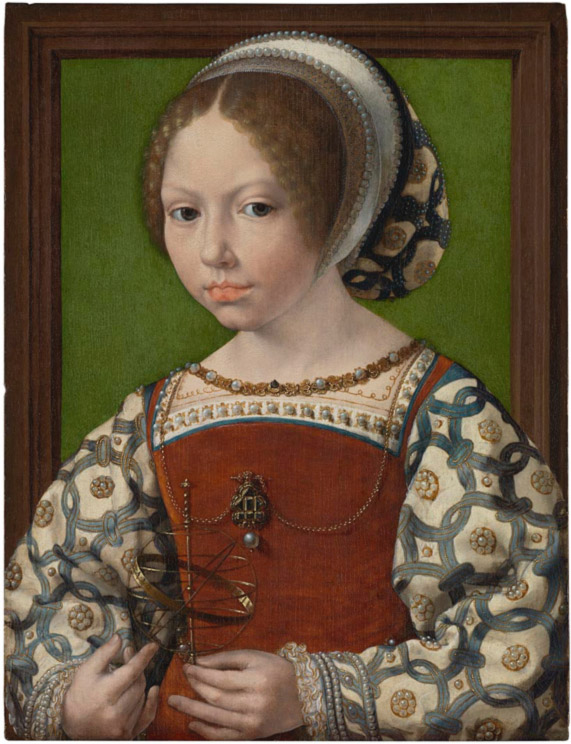
Jan Gossaert, A Young Princess (Dorothea of Denmark?) Ca. 1530. © The National Gallery, London
An account of A Young Princess (Dorothea of Denmark?)
In October 2010 an exhibition called Man, Myth and Sensual Pleasures: Jan Gossaert’s Renaissance opened in the Metropolitan Museum of Art, New York. It included the portrait A Young Princess (Dorothea of Denmark?), on loan from the National Gallery. The exhibition, along with portrait, subsequently transferred to London in February 2011, where it met with mixed reviews. It was accompanied by a catalogue raisonne edited by Maryan Ainsworth, who devised the exhibition, with contributions from Stijn Alsteens, Nadine Orenstein, Lorne Campbell, Ethan Matt Kavaler, Peter Klein, and Stephanie Schrader. Cambell has also produced a comprehensive essay on A Young Princess (Dorothea of Denmark?) for the National Gallery which provides an invaluable account of the artist and his paintings as, among other things, placeless objects.
A Young Princess (Dorothea of Denmark?) measures 38.2 cm by 28.1 cm and is supported by an oak panel, indicating that it is was indeed intended as a painting that could be moved around. The technical notes in Cambell’s account suggest that the panel was hewn from Baltic oak and that this particular piece of wood, 9 mm thick at the centre and chamfered to 2 mm at the edges, was formed between 1357 and 1503 (it has 143 rings). The painted ground includes animal-based binders and the pigments range from minerals such as azurite, possibly mined in Lyon, to organic composites synthesised by suppliers and others that were manufactured through a process of chemical interaction. Linseed oil was also used, along with pine resin, to bind the paint and produce the glaze. Like many paintings, this one represents the particular convergence of many constituents, all on the move, and the choreography of these spatially distributed and unrelated materials into a single, coherent object was the work of merchants, the artist himself and possibly his assistants. Moreover, Gossaert, as part of an embassy to the Vatican in 1508, was one of the first of the Northern artists to travel to Rome in order to draw inspiration from its antique heritage. He may have picked up some of the components of the picture on his travels, but whatever their origin, they came together on a piece of oak that found its way to his studio, along with the erotic sensibility that he encountered in Italian art. Back in the North, matter and mind merged with the dominant style of material realism made possible by the Northern ingenuity with paint.
Like Gossaert, A Young Princess (Dorothea of Denmark?) was also well-travelled. We know little of its early adventures but, according to Cambell, it was in France about 1800, was sold in London in June 1838, appeared again in Cheltenham in August 1859, and was taken to Worcestershire. In 1901 it passed to a Belgian critic who lived in Paris, where it was subsequently bought in 1908 by the National Gallery in London.12 It has been exhibited in Worcester, Bruges, Rotterdam and New York, and has also briefly crossed London from the National Gallery in Westminster to the Victoria and Albert Museum in South Kensington. The painting’s putative topic was no less mobile. Cambell fastidiously sets out the arguments about the identity of the sitter. These include the opinion that she was the daughter of Adolf of Burgundy, Lord of Veer, and Isabella of Portugal. These speculations, however, are dismissed on grounds of the girl’s apparent age and most notably the fact that Isabella and Gossaert were never in the same place. Cambell is sure, however, that the only young girls in possession of such rich attire who were known to be in the Low Countries at the same time as the artist were the daughters of King Christian of Denmark – it is thought that they may have acquired such sumptuous jewellery from Charles V while at the courts of Margaret of Austria and Mary of Hungary. On the basis of resemblance and age, Cambell argues that there is strong evidence to suggest that the sitter was indeed one of King Christian’s daughters, Dorothea. If this is the case, then the portrait also spent time in Heidelberg, from where it may well have been taken to France. None of this is certain but the evidence seems to stack up fairly convincingly that the sitter was, like the oak panel, the ground, the paint, the artist and the finished painting, a somewhat restless actor in the story of A Young Princess (Dorothea of Denmark?) that in 1908 settled in the National Gallery, London.
In contrast to this constant movement, however, there is a moment of extraordinary spatial stability in the painting, albeit presented with irony: a point where the eye becomes stilled by the unusual. Dorothea, if indeed that is who she is, holds an armillary sphere in her left hand and points to it with her right forefinger. These three-dimensional spherical models of the celestial bodies have a long history and were not especially novel in the sixteenth century, but they did take on some engineering refinements as tools became more sophisticated and aesthetic considerations were mixed with scientific descriptions. Usually, armillary spheres comprised metal hoops corresponding to the orbit of particular heavenly bodies, in the centre of which was the Earth, at least in Ptolemaic spheres such as the one depicted in the painting.13 The girl holds the sphere upside down and is pointing to the 55th latitude north of the equator; some have suggested that this inversion is a deliberate commentary on the kingdoms lost to Denmark. Certainly, Gossaert used the armillary in the painting self-consciously since he altered some of the bands and replaced the signs of the zodiac that usually appear on one of them with letters that might be intended as an anagram of his own name (although there are some unexplained extra letters and some omissions).14 Like the single hair in The Elderly Couple, this amended labelling of the star signs with a wilfully obscure version of the artist’s name places him as a wry and disruptive presence in the conceit of an engineered version of the universe. If there are some doubts as to the identity of the sitter, the intention of the inversion of the armillary sphere and why she might be pointing at 55 degrees north, there can be little doubt that she is holding something that is very much like a three-dimensional model of the universe, and that she is also outside that model gesturing to a point on the inside: a miniature God(dess), resting on the eighth day, pointing to an important local highlight.
An outsider view of cinema
There are many paintings in which armillary rings, orreries, planetaria and other models of the celestial sphere challenge the descriptive scientific narrative with an anecdotal presence that can only be explained as existing outside of the very thing that is said to contain them. Joseph Wright of Derby’s A Philosopher Giving a Lecture on the Orrery in which a Lamp is Put in Place of the Sun (c1766) is a spectacular and well-known example. The voyeuristic aspects of these devices are captured in Wright’s painting and evoke some of the conundrums posed by the cinema experience, in which the viewer finds themselves looking in on a world that contains them in various ways. I wrote something about this in Reflections in a Laser Disc: Toward a Cosmology of Cinema, a contribution to a book in honour of Thomas Elsaesser.15 In this chapter, I rather subversively drew parallels between the dispositive of cinema (the Biograph, in particular) and the origins of the orrery as a device that centralised the viewer as omnipresent maker:
In 1712 (possibly with the help of clockmaker Thomas Tompian) John Rowley built a mechanical model designed by George Graham in 1704 (1654-1751) demonstrating the relative positions and motions of bodies in the solar system for the fourth Earl of Orrery, Charles Boyle (1674-1731). According to most histories, by this time the so-called Scientific Revolution sparked by Copernicus (1475-1543) and fueled by Galileo (1564-1642) and Johannes Kepler (1571-1630) was well underway in the safe hands of Robert Boyle (1627-1691), Isaac Newton (1642-1727) and Hooke (1635-1703). Certainly in this baton race to reinstall man as the pivot of the universe, after having been so ignominiously dislodged from the centre of God’s eye (despite the resistance of the Church and the vigilance and abuses of the Inquisition), the significance of the Fourth Earl of Orrery is rather underestimated. Charles Boyle, however, did far more than recentralise man since the Orrery is a three-dimensional schematic which places the observer in a very special position outside the universe...16
Although it postdates A Young Princess (Dorothea of Denmark?) by nearly two centuries, as a conceit that places the viewer outside the schematic model of the heavens, the orrery is continuous with these depictions of an insoluble spatial/material problem. The apparently straightforward image of a young girl with a scientific ‘toy’ asks us to consider the implications of being outside a universe pointing in to where we are. It dares to propose that if we are not the Creator him/herself, then at the very least we are a transcendental intelligence that can be in two places at once. Just as Gossaert cleverly marshalled his constellation of moving parts (panel, support, pigments, etc.) to render his depiction of the ‘young princess’ who sat before him, so the armillary sphere could suggest that the universe was also a ‘sitter’ (although subservient to the child) for a portrait that also included the artist in virtue of the obscure anagram of his name painted on the zodiac ring. This in itself was not especially daring for a painter; after all, the sly self-portrait as a paradox of representation is a frequent trope and arguably finds its apogee in Foucault’s commentary on Velazquez’ Las Meninas. But the trick of A Young Princess (Dorothea of Denmark?) is to naturalise the schematic rendition of the Earth and all about it with the rich adornment of the girl’s garments: the armillary sphere echoes the pattern on the sleeves of her dress and appropriates the sumptuous pearl hanging at her breast, absorbing it into its orbit. Despite all the motion of the artwork and the compositional instability caused by the painted frame, the image gains an extraordinary solidity by both formally and iconographically placing the universe in the image. One effect of this positive placing is to insist on containing the image within its own terms and less as a surrogate for the sitter.17
As I suggested in the contribution referred to above, one way to account for the extraordinary and unexpected appeal of the Cinématographe lies in the sweet paradox of the orrery. The Cinématographe and its derivatives laid claim to a cosmology that was as paradoxical but no less satisfying than the orrery. The viewer regarded events from a point of view outside the universe in which they lived – whether it was through the narration of a short story, the passage across a foreign land, or a moving image of the planets. Its importance in the story told here lies in the fact that it technologizes the perspective of a super-deity and provides a mechanical apparatus in which the distribution of knowledge (in a narrative film, for example) has sustained a near-universal experience, the pleasures and discourses of which can be shared across time and space. The more-or-less unchallenged interpretation of the Cinématographe as a ‘seance machine’ which was used to induce a collective experience can be linked to the very particular subject position offered by three-dimensional kinetic celestial mapping. Like the orrery, it produced a quite particular cosmology which found popular form in a version of cinema that had an indexical relationship with the everyday perception of the world it was projected into.18
Thoughts about the orrery remained with me, and many years after writing Reflections in a Laser Disc: Toward a Cosmology of Cinema, I began making a series of schematic cosmological models that did not relate to any known universe but, more generally, tackled the problem of what it means to be placed outside something that is supposed to contain the maker/viewer in all their fullness. Like the armillary sphere in the Gossaert portrait, these were conceptual equivalents of the universe that were subject to their own internal logic in which nothing external (including the universe itself) was excluded: a material equivalent of an event horizon at the edge of a black hole. This is why I was struggling with the problem of exhibiting these objects, and also why the distracted conversation and the accidental meeting with A Young Princess (Dorothea of Denmark?) was so fortuitous.
Some experiments in exile
Each of us can supply evidence of late works which crown a lifetime of aesthetic endeavour. Rembrandt and Matisse, Bach and Wagner. But what of artistic lateness not as harmony and resolution, but as intransigence, difficulty and contradiction? What if age and ill health don’t produce serenity at all? … Ibsen’s last plays suggest an angry and disturbed artist who uses drama as an occasion to stir up more anxiety, tamper irrevocably with the possibility of closure, leave the audience more perplexed and unsettled than before. It is this second type of lateness that I find deeply interesting: it is a sort of deliberately unproductive productiveness, a going against. (Edward Said, Thoughts on Late Style)19
I was clear from the very beginning that I was making things that would not find their way, even briefly, into a gallery; they would transit from studio to storage in the cellar, following my work’s usual trajectory to its final resting-place. Edward Said’s inspirational text on late style gave me the opportunity to make something that simultaneously was, and was not a schematic model of part of the heavens. They had to be objects, both something and nothing, just on the edge of comprehension, that would not necessarily be seen by anyone (like Gossaert’s single hair on the old man’s shoulder). They had to imply a scientific description as novel as Flammarion’s, but one in which, on closer inspection, any recognition and familiarity would be unravelled by the discontinuity and contradiction in the image; that is, objects that commanded authenticity without explanation. They had to be more than museum curiosities; rather, they had to appear to be authentic, immutable ‘mobiles’, in Bruno Latour’s sense of the term:
If you wish to go out of your way and come back heavily equipped so as to force others to go out of their ways, the main problem to solve is that of mobilization. You have to go and to come back with the “things” if your moves are not to be wasted. But the “things” have to be able to withstand the return trip without withering away. Further requirements: the “things” you gathered and displaced have to be presentable all at once to those you want to convince and who did not go there. In sum, you have to invent objects which have the properties of being mobile but also immutable, presentable, readable and combinable with one another.20
To articulate the idea of intellectual mobility in an object that attempts to make a truth claim, I used the familiar trope of the bespoke instrument box. But, rather like the painted frame enclosing the green field that tilts the ‘young princess’ a little awkwardly out into the world in Gossaert’s portrait, these boxes also had a distinctly odd spatial logic. Over a period of about three years, I diligently made this series using eighteenth-century hardwood that I salvaged and put back together with fine and, at times, over-elaborate joinery. The sense of what I wanted to achieve required that, on close inspection, every aspect of the object would suggest a level of intentionality in the construction that spoke of a definite purpose without clearly revealing what that purpose was. With clever joints, fine polishing and some deliberate distressing, these objects became the kind of fusion of the minimal and the baroque that can be found in early scientific instruments.
I worked on this project in my studio in a protracted way (I was also writing at the time), almost always without drawings and with a lot of false starts and discarded attempts. Gradually, each object in the series would begin to take on a shape and identity as the intricacies of cabinet-making and the juxtaposed resolution of drawn lines and surfaces combined in an endless reiteration until the moment when all of these elements appeared (albeit temporarily) in their own rightful place. At about this stage in the process, the dust and competition from other activities in the studio obliged me to move the objects in their semi-finished state into the house, where aside from being less vulnerable, they could be thought about in passing and altered.21 Slowly, the whole arrangement was consolidated and finalised, and became ‘immutable, presentable, readable and (much to my amazement) combinable’. Although I was aware that many of the tools, machines, materials and techniques that I used in the construction of these objects were the same as those used in my studio for chores such as general maintenance, repairing and making furniture, and finishing a staircase (that, for some unknown reason, a builder had abandoned part way through), it was something of a surprise to see them in a domestic context, seamlessly integrating with this other world of philosophical challenge and aesthetic pleasure that I had always imagined was subaltern to my practice.
Over time, this technique of changing the places of the objects as a strategy for reflection and reiterative practice became somewhat formalised as the correlation between elements in the series of objects began to anticipate their relocation to the house. This generated a dialogic interaction in this new environment (which also included other objects that had emerged from the studio/workshop) that gave these new pieces an amplified object-hood (in Graham Harman’s sense of the term). Conscious of this, subsequent variations on the theme of the Impossible Orrery developed in response to what already existed in both places: the two distinct categories of practice retained their independent identities but at the same time seemed to offer a thick description of each other. Each category of practice added a subjective perspective to the context of the other. Much as the armillary sphere in A Young Princess (Dorothea of Denmark?) offers an affinity in the image with the subject position it constructs, the relational interaction of the various versions of the Impossible Orrery and the other objects that had been made/repaired/finished in the studio but now comprised the domestic environment evoked Said’s reflection on late style in relation to the idea of exile, which claims the ‘place’ of ‘place’ as the site of a sustainable paradox:
In one of Cavafy’s finest late poems, ‘Myris: Alexandria, A.D. 340’, the speaker attends the funeral of his charming former drinking companion Myris, a Christian who in death is being re-created as an object of elaborate church ceremony. He suddenly fears that he had been deceived by his passion for Myris and runs away from the ‘horrible house’.
I rushed out of their horrible house
rushed away before my memory of Myris
could be captured, could be perverted by
their Christianity.
This is the prerogative of late style: it has the power to render disenchantment and pleasure without resolving the contradiction between them. What holds them in tension, as equal forces straining in opposite directions, is the artist’s mature subjectivity, stripped of hubris and pomposity, unashamed either of its fallibility or of the modest assurance it has gained as a result of age and exile.22
The concept of exile in Said’s version of late style makes clear that place is not solely an agent of structural contextualisation in the relationship between subject and object (as in, for example, the routines of academia, such as those by used by Cambell to thicken the description of A Young Princess or the strange hanging of Veronese’s Four Allegories of Love in the National Gallery), but it also has agency in an object-to-object relationship that we do not have any meaningful access to except, in part, through reflecting on our experience. Said’s lesson is that in order to nurture this we must become less ashamed of admitting our fallibility. In my case, this meant a frank acknowledgment of the continuity between professional artistic and domestic practices, liberating the possibility of less self-conscious ‘homes’ for the Impossibly Orrery series without reducing the tension between these locations as important individual places in which I live and think.
The Impossibly Orrey
Objects: Michael Punt, Photography: Jacqueline Knight
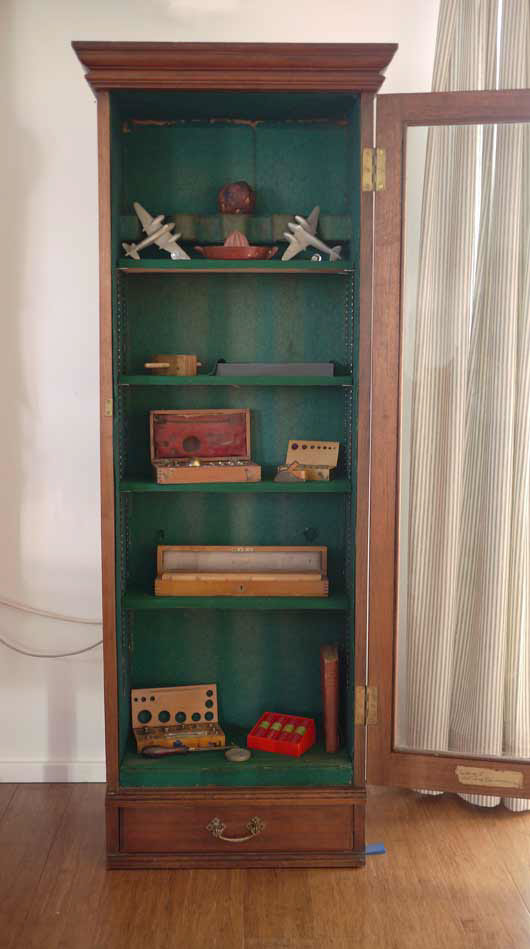
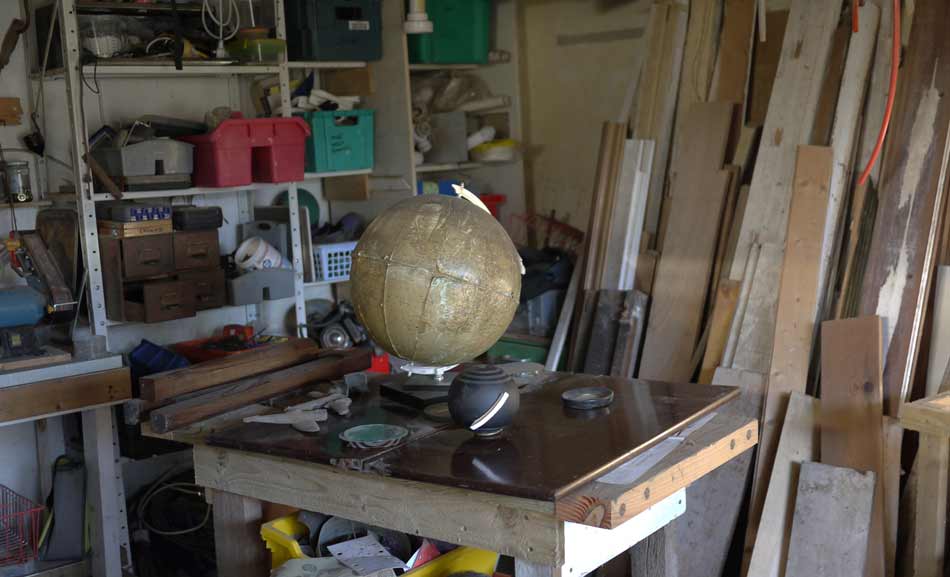
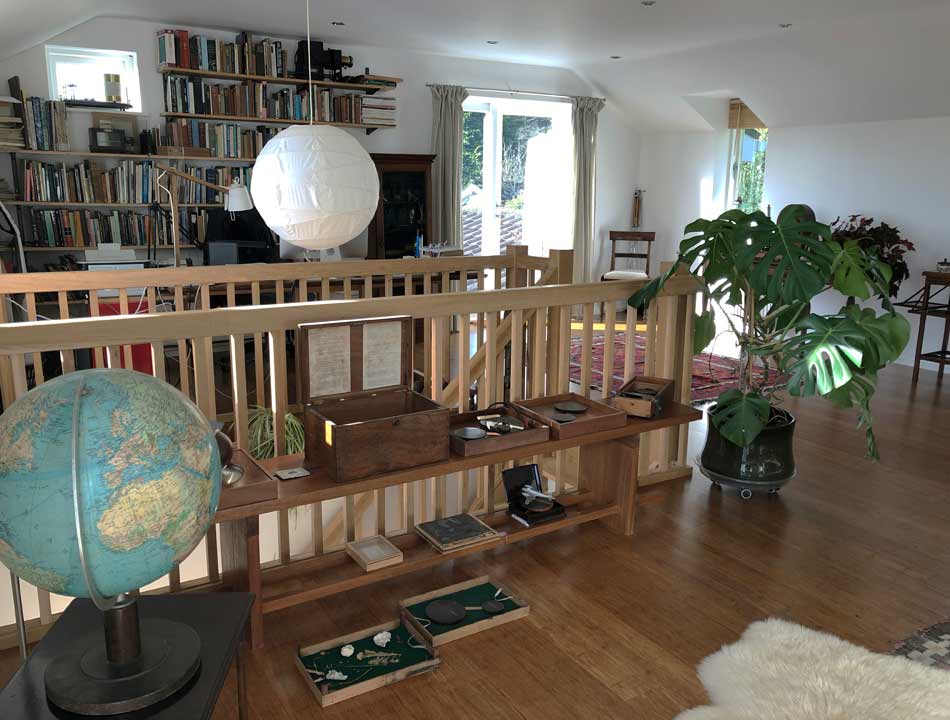
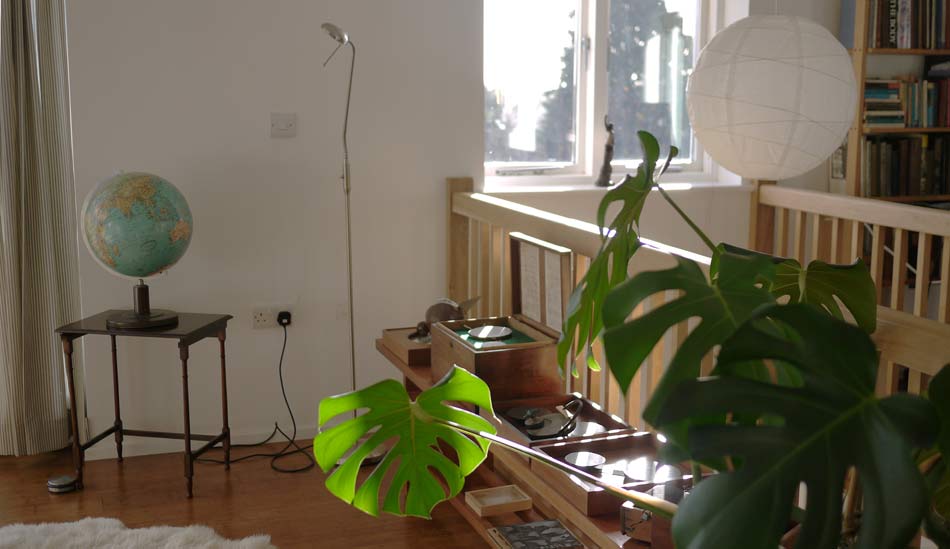
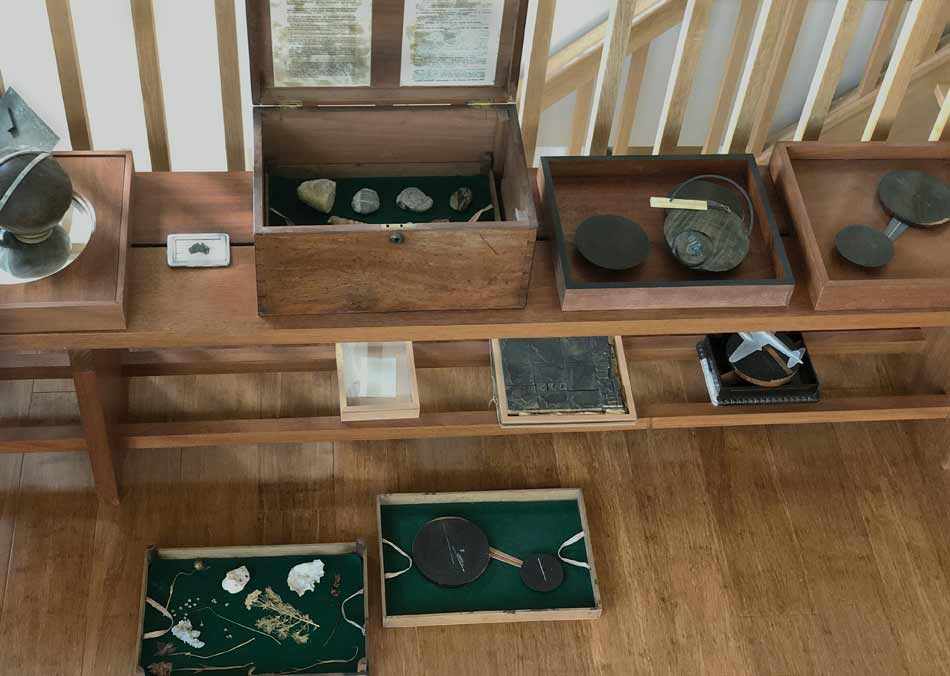
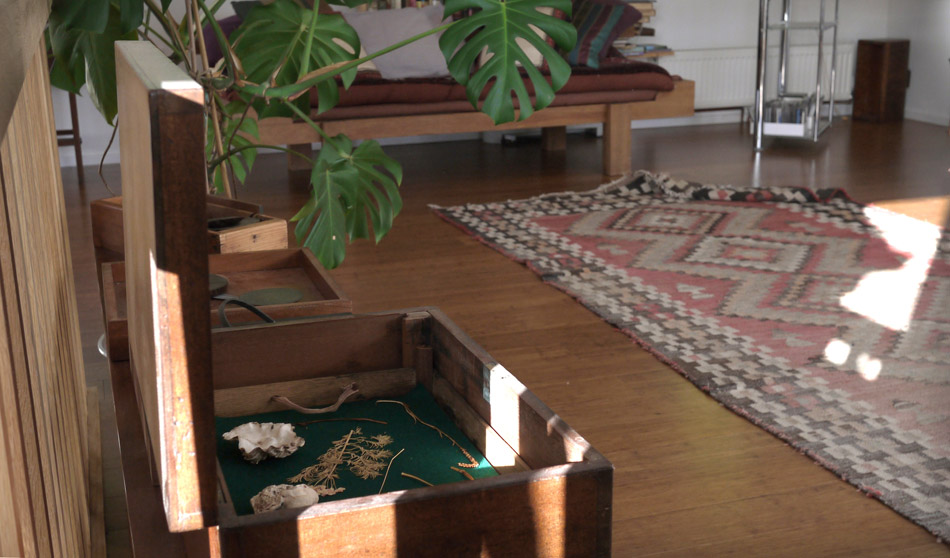
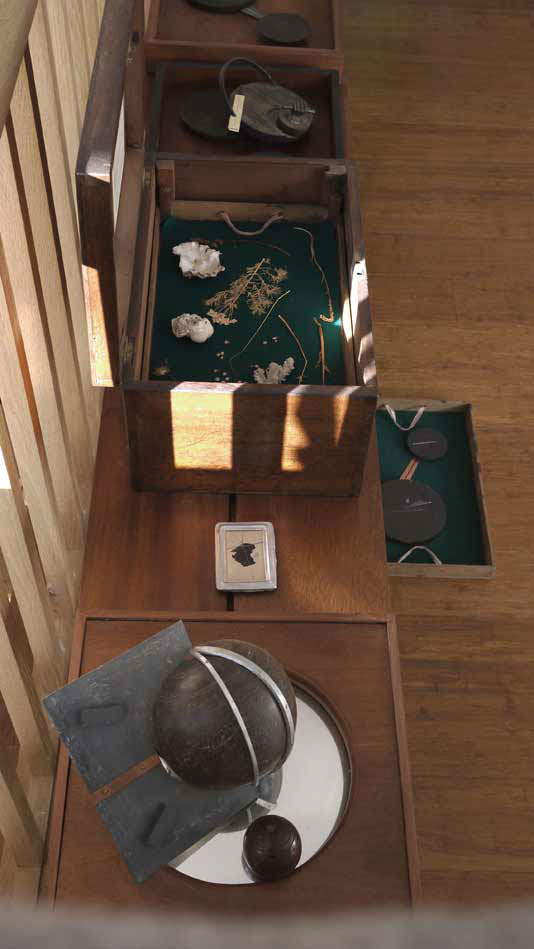
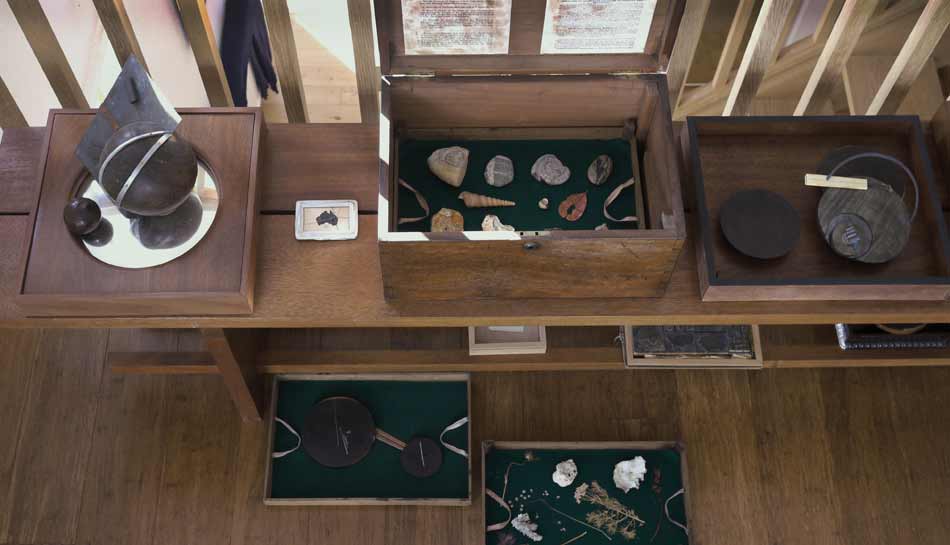
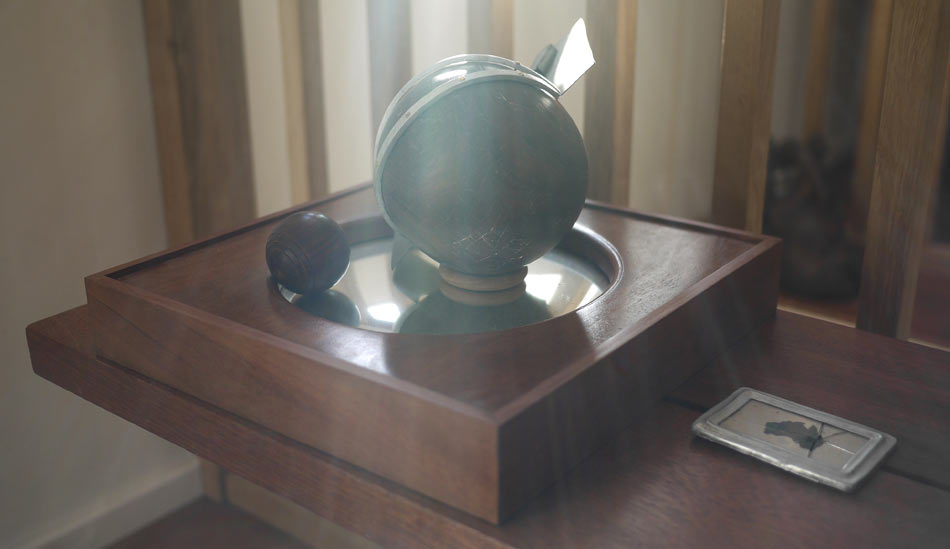
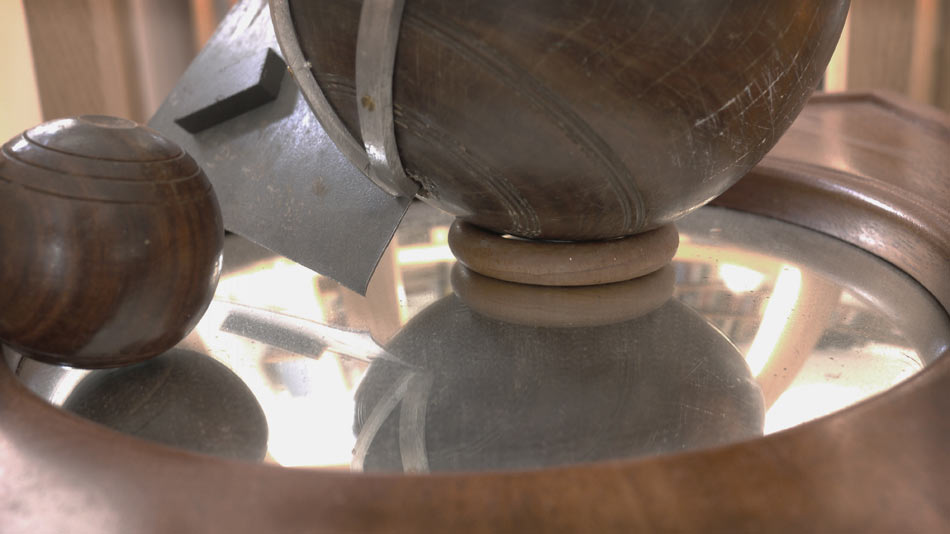
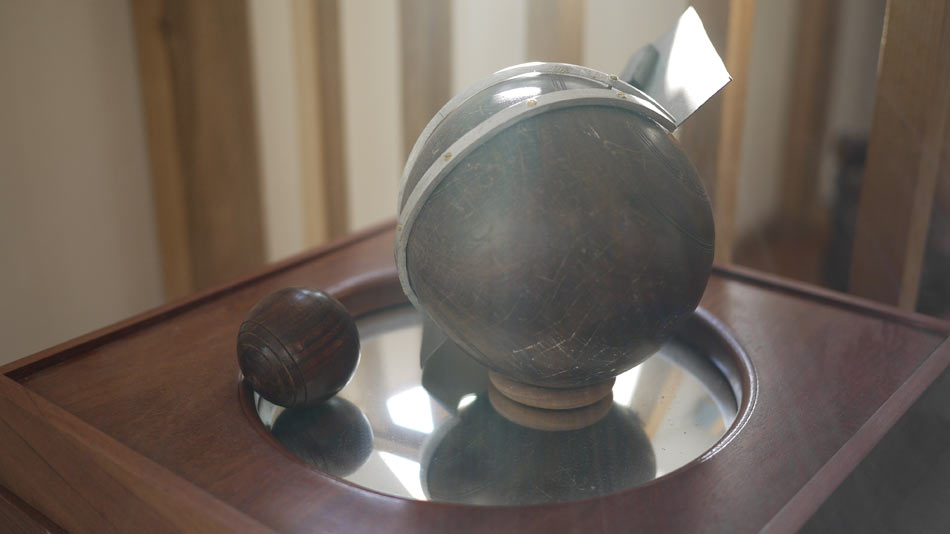
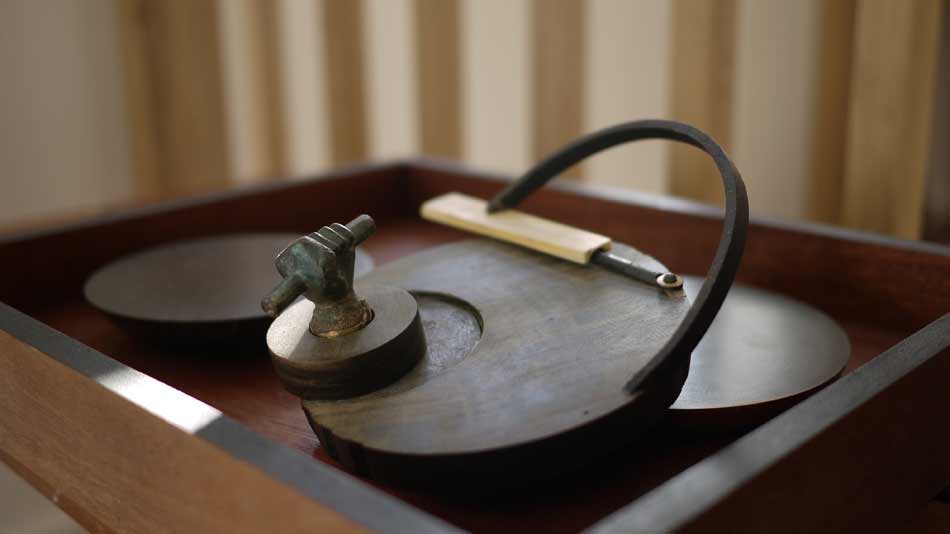
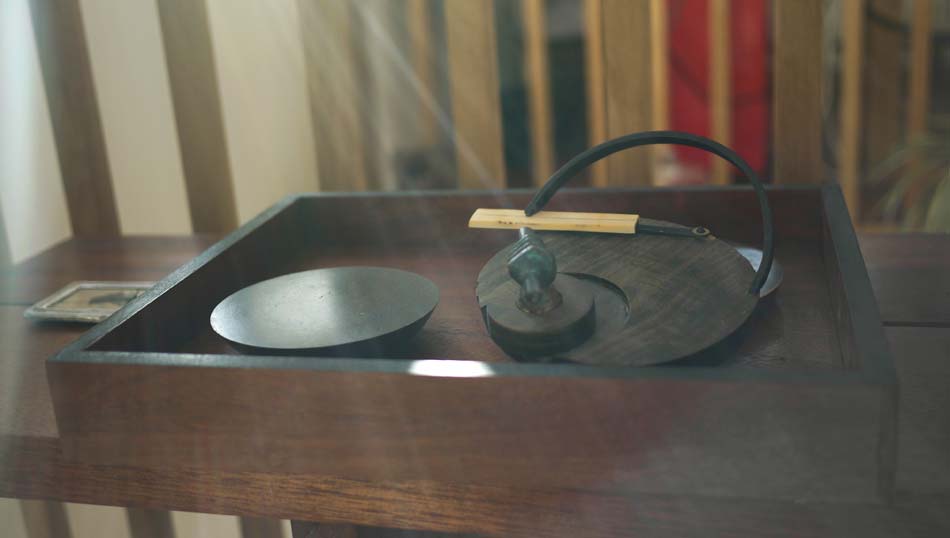
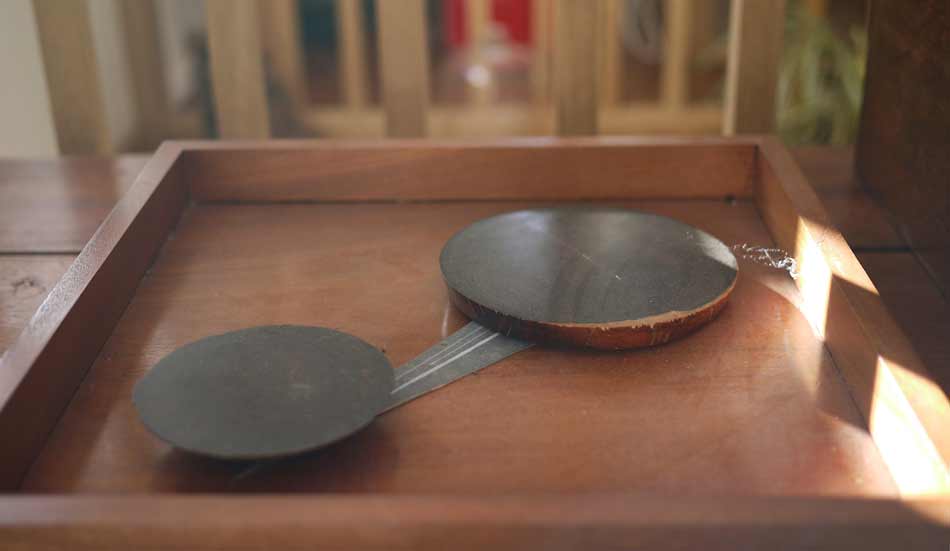
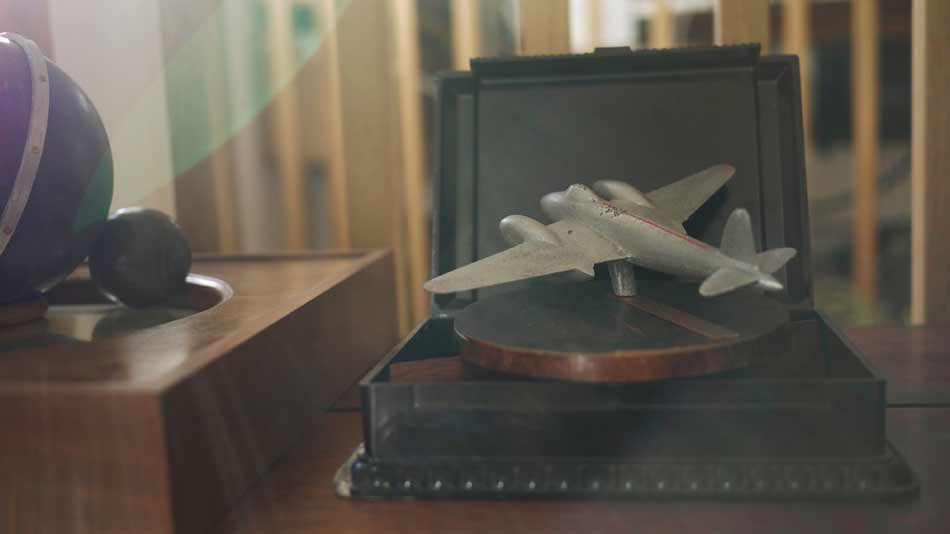
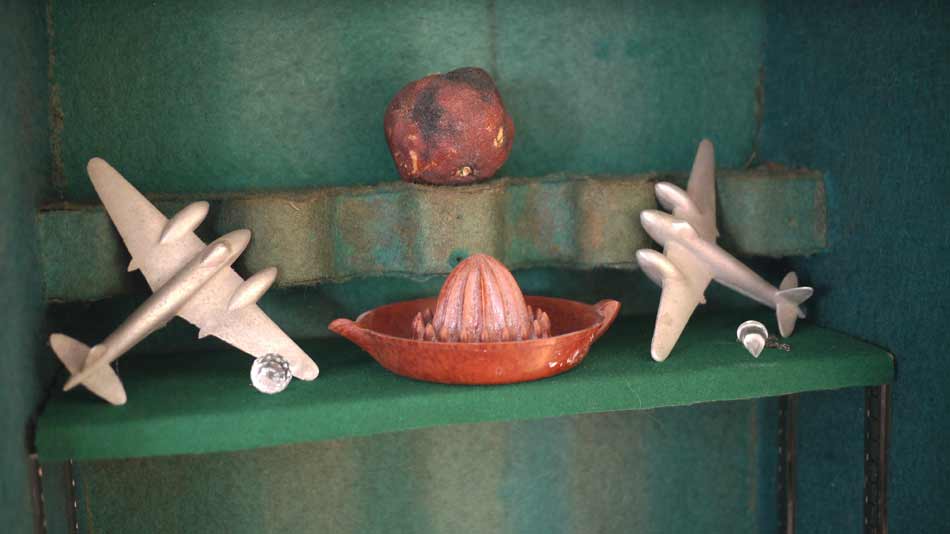
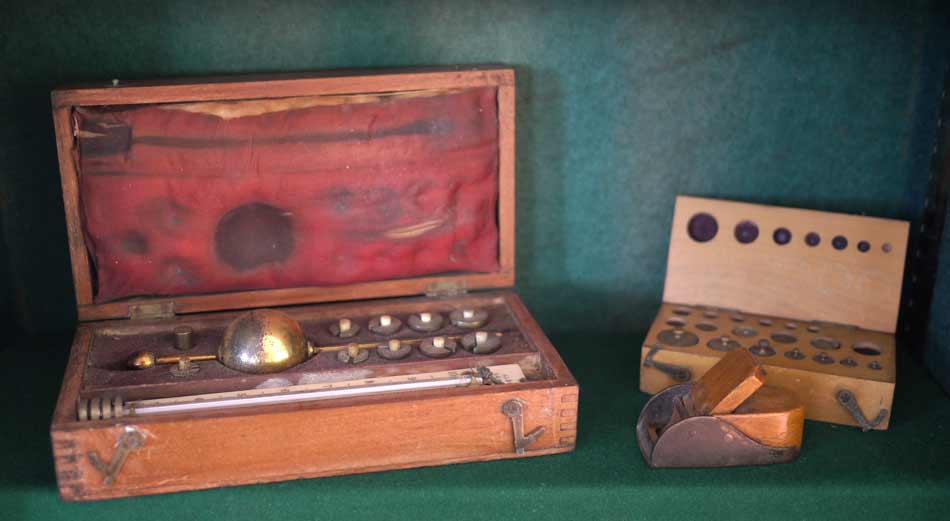
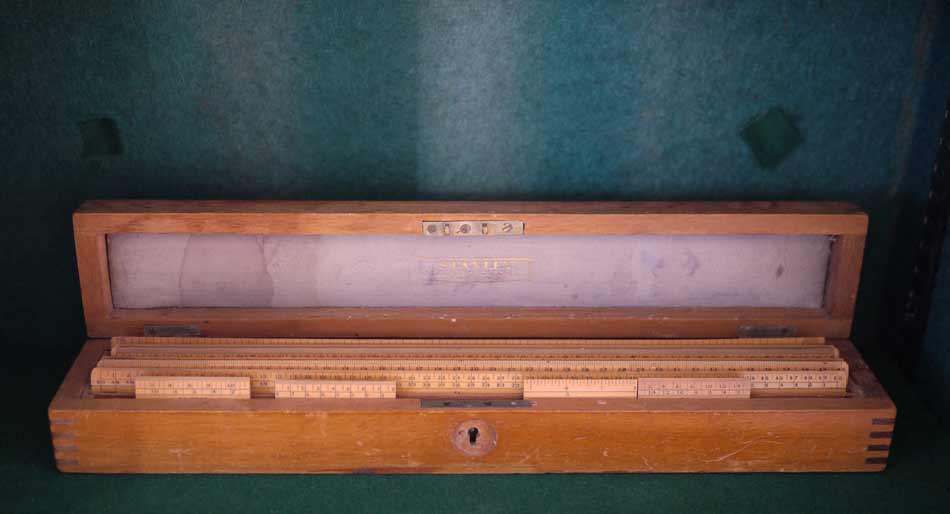
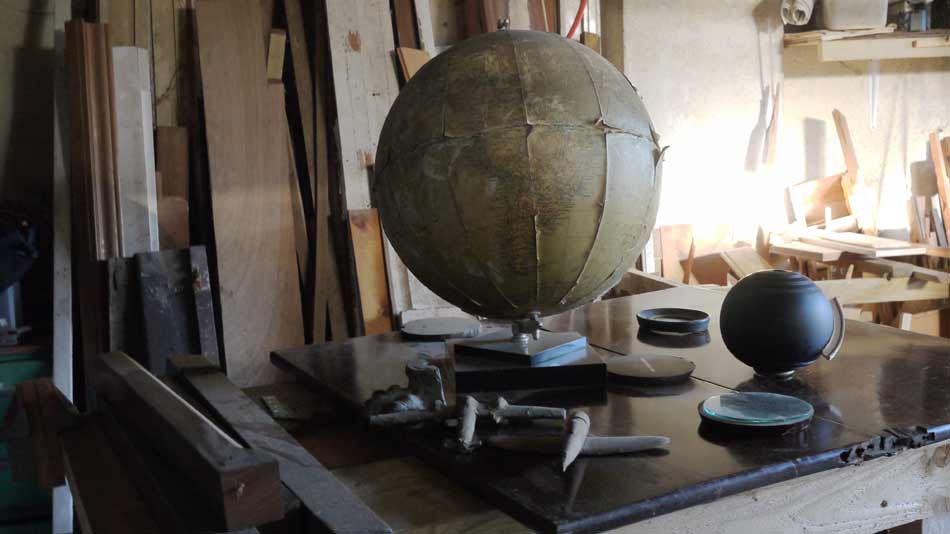
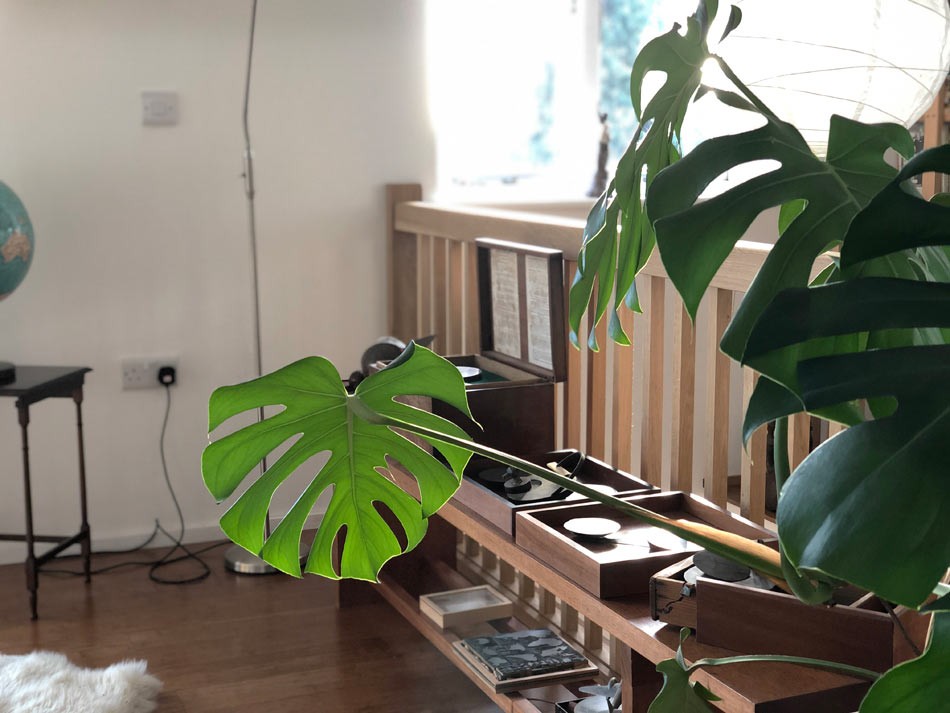
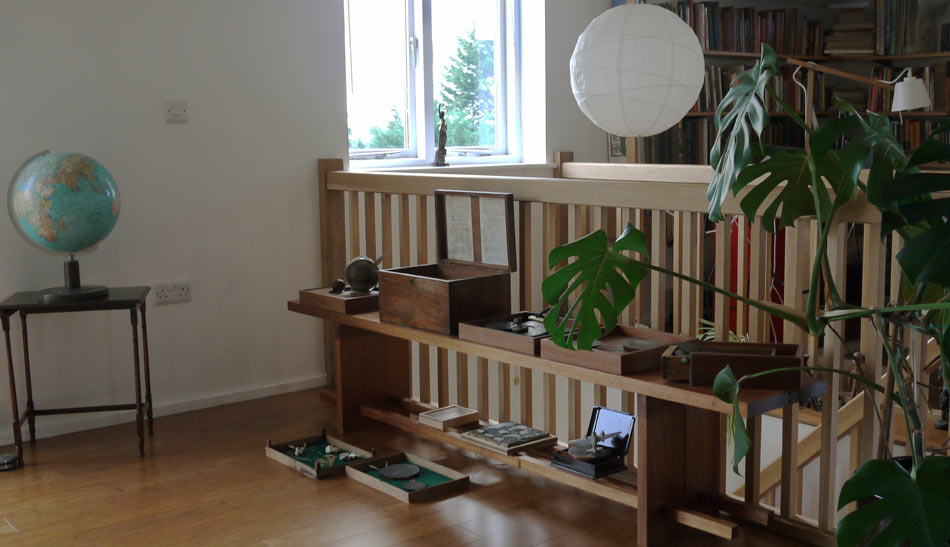
<
7 / 21
>
References:
Ainsworth, M. W. (2010). Man, Myth, and Sensual Pleasures; Jan Gossart’s Renaissance: The Complete Works. New Haven: Yale University Press.
Blassnigg, M. (2009). Time Memory, Consciousness, and the Cinema Experience. Amsterdam: Rodopi.
Cambell, L. (2011). A Young Princess, (Dorothea of Denmark?). London: National Gallery. https://www.nationalgallery.org.uk/media/15481/jean_gossart_a_young_princess.pdf
Flammarion, C., trans. Gore, J.E. (1907). Popular Astronomy: A General Description of the Heavens. London: Chatto and Windus.
Harman, G. (1028) Object-Oreiented Ontology: A New Theory of Everthing. London: Pelican.
Latour, B. (1986). Visualisation and Cognition: Drawing Things Together. IN: H. Kuklick (Ed.) Knowledge and Society Studies in the Sociology of Culture Past and Present. Greenwich: Jai Press vol. 6, pp. 1-40 p.7.
Montherlant, H. (1968). trans. Terence Kilmartin. The Girls; a tetralogy of nevels in two volumes. London: Weidenfeld&Nicolson.
Punt, M. (2008) Reflections in a Laser Disc: Toward a Cosmology of Cinema. IN: Kooijman, J., et al (Eds.) Mind the Screen. Amsterdam: AUP.
_______. (1995). The elephant, the spaceship and the white cockatoo; an archaeology of digital photography. IN: M. Lister, ed. Photography in the Age of Digital Culture. London: Routledge, pp. 51-77.
Said, E. (2004). Thoughts on Late Style. LRB Vol. 26 No. 15.
Turim, M. (1989). Flashbacks in Film; Memory and History. London: Routledge.
